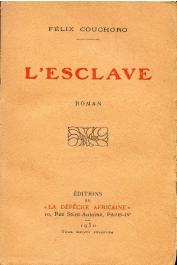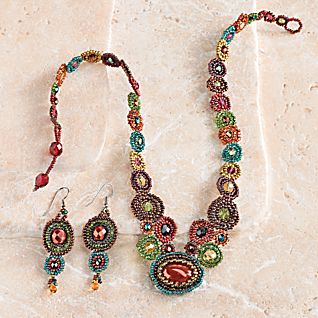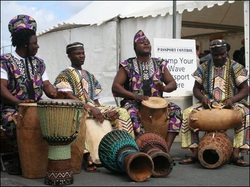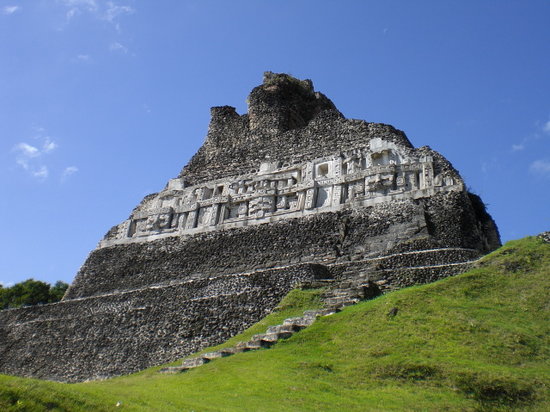Now this time, I couldn’t narrow it down to just one bread –
I had to do two. The first bread that I made was a mango bread. It called for
fresh chopped mangoes; however, mine weren’t ripe at all. It felt like I was
biting into an apple slice, and the flavor was subdued. I chopped it finely in
hopes that it’ll soften during baking. It also called to be baked in a Dutch
oven. I had to do a little research and came up with this plan: I took a
casserole dish and heated it in the oven at 500 degrees for about 15 minutes.
Then I put my dough mixture into my silicone loaf pan and placed that in the
casserole dish with the lid on for 20 minutes at 450 degrees. That’s enough
time to build up natural steam (in lieu of using a steam-injected oven); then
you can take the lid off and continue baking for about another 40 minutes. Unfortunately,
either 40 minutes was too long or 450 degrees was too high of a temperature
(I’m more inclined to think the latter – that part of the directions were
somewhat vague), because I took it out and the outsides and bottom were a
little more on the burnt side. However, the inside was nice and moist. So, I tried to salvage as much as possible.
 |
| Thanks to Instagram, it lightened the parts that looked burnt. |
I also did a peanut butter bread. This one turned out better
than the first one. However, it was just a little less sweet than I thought it
was going to be, but nonetheless very good. I’m planning on putting some jelly
on it later and seeing how that works out. However, my baking powder may be
getting old because I had to take a knife to it and stab it to death in order
to break it up. And there were still these minute rocks of baking powder that
didn’t get mixed thoroughly, so while it tastes ok, there are these white balls
of powder stuck in the middle of the bread.
 |
| Peanut butter bread. It's just calling to add jelly to it. |
My main meal today was called crabe béninoise. A mix of crab meat (I
cheated and used fully-cooked imitation crab. Sue me.), chopped onions and
tomatoes, a little garlic and chopped pimentos as well as bread crumbs. I went
ahead and added some capers too. After that, you place the mixture into
ramekins (I found a set of 5 at Goodwill for 99 cents a piece!) and top it off
with more bread crumbs. After baking for
a half-hour in the oven, it comes out, and voilà. The recipe I was looking at
recommending serving it with rice, but I used couscous instead. I used couscous
when I cooked for Algeria.
Originally, I had intended to make some fried pumpkin since
I found a recipe for it. Because it’s really close to Halloween, there are
pumpkins galore. But I got tired, and I got lazy. More or less.
 |
| The final meal. Yes, I know there are no vegetable included in this meal. Next time, I'll make sure of it. |
But no birthday is complete without a cake. Or something
sweet at least (with the notable exception that one year, my mom forgot to make
me a cake, so we put my candles in some cornbread. But that’s ok, because I
happen to like my mom’s cornbread.). I
decided to go with flan au citron, though it’s not my first birthday flan
interestingly enough. But it is my first
flan I’ve ever made myself. And I’m also adding an orange sauce (that I pulled
from a “Baby Bananas in Orange Sauce” recipe).
It calls to make it in a bain-marie, which is a French term for what is basically
a water bath. It sounds really complicated, and I have to admit was a little
intimidated by the whole thing. I finally put all the ingredients together in
my make-shift bain-marie and everything seems to go ok. It’s thickening, but even after the
recommended 45 minutes, it still wasn’t as thick as I thought it should be. I
had to add almost 30 more minutes for it to thicken, which it never did fully.
As I shoved it in the freezer to speed up the process of “cooling thoroughly,”
I tried to do the orange sauce. It actually turned out – once poured onto the
cooled flan – that it turned out to quickly change to rock consistency. Not sure
what happened, but I seriously need to read up on making sauces and such. I
would definitely fail at being a saucier.
 |
| Quasi-flan with orange sauce-flavored rock sauce. |
Overall, I couldn’t think of any other way I would want to
spend my birthday. I spent it at home, with my husband (who got me a new outer
tie-rod for my vehicle, because after all, safety is the best gift ever. He
also followed up with flowers.) and my kids. And I spent my day doing exactly
what I like to do: watched a movie (I watched “Blood Diamond” starring
Beninese-American actor Djimon Hounsou), cooking, baking, and writing. I’m
hoping this coming year brings more of the same.
Up next: Bhutan

































